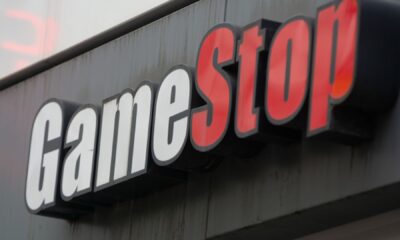Sporrer/Rupp | Image Source | Getty Images
The largest and final cohort of the baby boom generation — 30.4 million Americans — will turn 65 by 2030.
And more than half of that group will primarily rely on Social Security for income, according to new research from the Alliance for Lifetime Income.
Deciding when to claim Social Security retirement benefits is a high stakes decision. Generally, the longer you wait, the larger your monthly checks will be.
Eligibility for retirement benefits starts at age 62. But full retirement age – generally age 66 or 67, depending on an individual’s birth year — is when retirees may receive 100% of the benefits they’ve earned.
For each year you wait past full retirement age up to 70, you may receive an 8% benefit boost.
“Everyone should know that you have a penalty if you collect before 70,” said Teresa Ghilarducci, a professor at The New School for Social Research and author of the book “Work, Retire, Repeat: The Uncertainty of Retirement in the New Economy.”
Yet a majority of new retirees tend to claim benefits before age 65, according to the Alliance for Lifetime Income’s new research, though waiting another five to eight years would result in higher lifetime benefits.
How to know your full retirement age
To gauge when to claim, you first should know your full retirement age — the point when you’re eligible for 100% of the benefits you’ve earned.
Today, a new higher full retirement age of 67 is getting gradually phased in.
“For most of the people retiring today, their full retirement age is somewhere between 66 and 67,” said Joe Elsasser, a certified financial planner and president of Covisum, a Social Security claiming software company.
If you were born between 1943 and 1954, your full retirement age is 66. The full retirement age increases gradually if you were born from 1955 to 1960 until it reaches 67. If you were born in 1960 or later, your full retirement age is 67.
| Year of birth |
Social Security full retirement age |
| 1943-1954 |
66 |
| 1955 |
66 and two months |
| 1956 |
66 and four months |
| 1957 |
66 and six months |
| 1958 |
66 and eight months |
| 1959 |
66 and 10 months |
| 1960 and later |
67 |
Source: Social Security Administration
Why it pays to delay retirement benefits
Claiming at age 62 comes with significant penalties, experts say.
For people who are turning 65 this year, early claiming would result in a 30% benefit cut. Instead of $1,000 per month at their full retirement age, 66 and 10 months, they would receive around $700 per month had they claimed at age 62.
Most people know that early claiming will result in reduced benefits, a Schroders survey from last year found. However, many respondents still planned to start their monthly checks early.
Using the word “early” to describe claiming at 62 may lead people to feel there is an advantage to claiming then, Shai Akabas, executive director of the economic policy program at the Bipartisan Policy Center, noted during an Alliance for Lifetime Income’s presentation.
Instead, that may be called the “minimum benefit age” to help people understand there are benefit reductions for claiming then, he said.
A bipartisan group of senators has called for making that change, as well as changing “full retirement age” to “standard benefit age.” Age 70, the highest claiming age, would be called the “maximum benefit age.”
When deciding the right time to claim Social Security, retirees should consider not only the size of their monthly benefits, but also their lifetime benefits, longevity protection and immediate needs, according to the Bipartisan Policy Center.
It also helps to consider how a claiming decision will affect a spouse or dependents who may also receive benefits based on a worker’s record.
Research has found only about 8% of beneficiaries delay until age 70, the highest possible age to claim benefits, according to Ghilarducci. Because Social Security benefits are one of the few sources of guaranteed income for many retirees, having smaller monthly checks can make them more financially vulnerable.
Those who can’t delay their Social Security benefits for years can still increase their lifetime benefit income by delaying for just a few months, according to Ghilarducci.
“Do whatever you can to bridge to a higher Social Security benefit amount,” Ghilarducci said.


 Accounting1 week ago
Accounting1 week ago
 Economics1 week ago
Economics1 week ago
 Economics1 week ago
Economics1 week ago
 Personal Finance1 week ago
Personal Finance1 week ago
 Blog Post4 days ago
Blog Post4 days ago
 Economics5 days ago
Economics5 days ago
 Personal Finance1 week ago
Personal Finance1 week ago
 Finance1 week ago
Finance1 week ago












